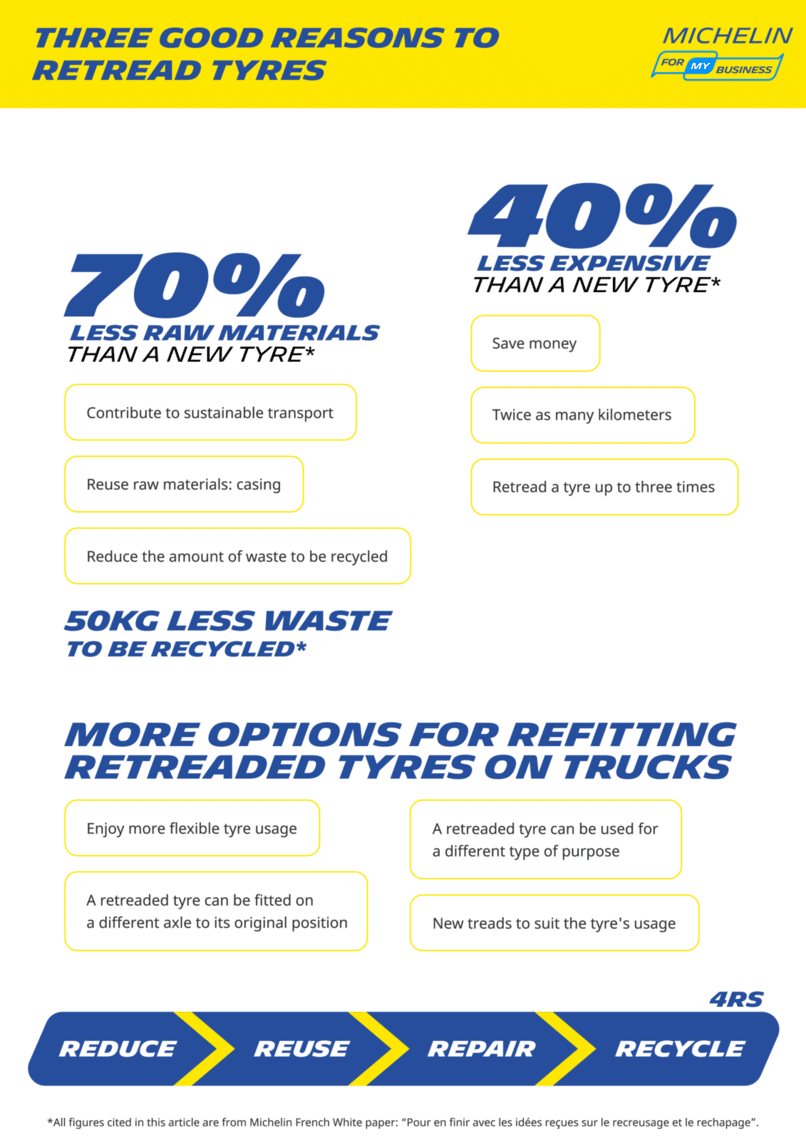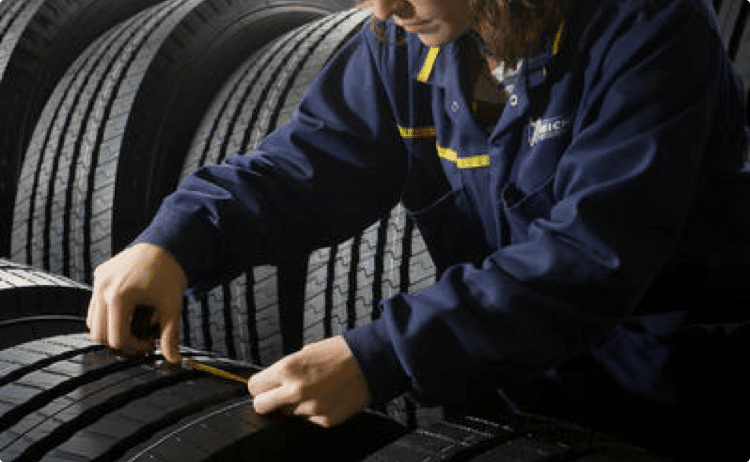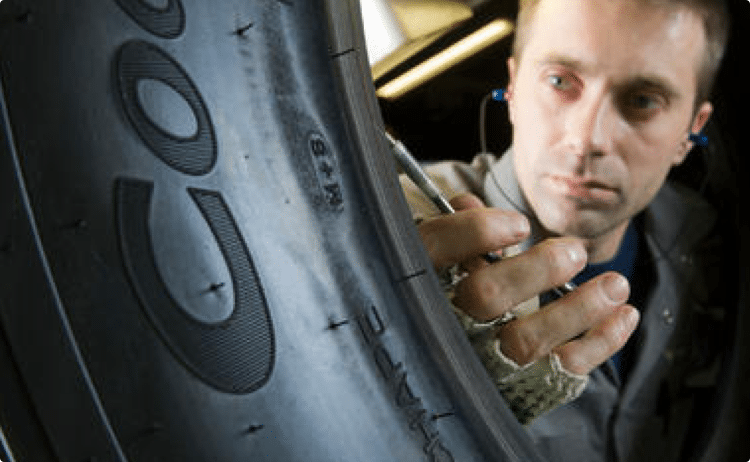
retreadingtyres header
Let's dispel all of the misconceptions about retreading, once and for all. Find out why this operation has become not only an economic issue but also an ecological issue for transport companies, including small fleets. David Cardoso*, Retreading Product Category Manager at Michelin**, tells us more.

retreadingtyres portrait
David Cardoso Product Category Manager – Retread Truck and Bus – EMEA** at Michelin
Retreaded Truck tyres deliver real cost savings
TRUE – On average, a retreaded tyre costs 40%*** less than a new tyre, even though it often contains the same rubber compounds and technologies, and maintains the performance levels of a new tyre.
MICHELIN tyre casings are designed from the outset to be retreaded and even several times in certain types of usage.
Retreaded Truck tyres are less reliable
FALSE – Retreading consists of replacing a worn tyre tread with a new one. When the operation is performed by experts, on a good-quality casing, the retreaded tyre delivers comparable performance to that of a new tyre in terms of safety, robustness, efficiency and mileage.
And yet, for a long time, some people associated the tyre treads abandoned on roadsides exclusively with retreaded tyres. This is untrue, but kept the misconception alive.
A tyre can be retreaded up to three times, depending on the casing and type of tyre usage
TRUE – The number of retreads depends on the casing's condition once its tread has been worn, and in particular its potential. Tyres used for Works Approach applications can be retreaded twice with MICHELIN Remix or even three times with RECAMIC or Laurent Retread. Technically speaking, the casing does not "cycle" a lot (it doesn't go around many times). This is not the case for long-distance transportation, where there is less application of the engine/braking torque. For this type of operation, the tyre will generally be retreaded only once, but will be able to cover up to one million kilometers***!
The tyre casing has no bearing on the retread
FALSE – It is a key factor. For good-quality retreading, you need a robust casing. Excellent support, combined with the expertise of professionals, yields a retreaded tyre that does an excellent job.
High quality casings can be retreaded throughout their full lifespan until they have reached the legal limit (for example, 10 years in the UK).
Retreading is not for small truck fleets
FALSE - Retreading is suitable for fleets of all sizes! It also delivers three benefits that are not inconsiderable for their tyre budget, namely the price, kilometers and flexible usage. Retreading is good for the environment because it maximises the use of raw materials and reduces the amount of waste to be recycled.
Michelin was a trailblazer in retreading
TRUE – Michelin is a major player in retreading, with over 60 years of expertise, following on from its new tyre offering. The retreading teams work closely with the new-tyre teams, right from the beginning of the project. On average, retreading saves 70% of raw materials in comparison with a new tyre***.
Three good reasons to retread tyres

three good reasons to retread tyres
The Michelin Group's three retread brands

retreadingtyres brand1
Michelin REMIX® (European) – Premium
- Retreading exclusively on Michelin casings.
- Maintains the performance of new MICHELIN tyres (safety, robustness, efficiency, mileage, etc.)

retreadingtyres brand2
Michelin RECAMIC (European)
- Treads made in France in a MICHELIN Group plant.
- Sold to partners that have retreading workshops.
- No exclusivity with regard to the casings
- Technical guidance and support by MICHELIN experts

retreadingtyres brand3
Laurent RETREAD (mainly France / Germany / Switzerland / Benelux & Spain)
- Local retreading in the Avalon plant in France (Burgundy – Franche Comté).
- No exclusivity with regard to the casings
* Interview by David Cardoso conducted on 29 october 2021
**Europe, Middle East and Africa Zones
***All figures cited in this article are from Michelin French White paper: “Pour en finir avec les idées reçues sur le recreusage et le rechapage”.

gettyimages 930571046
car going fast on a road by night








